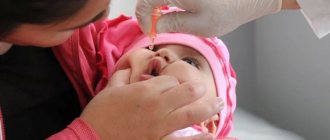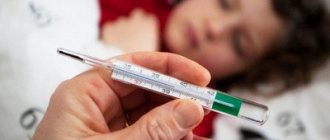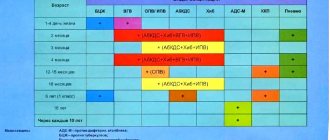Full text of the article:
The Russian calendar of recommended vaccinations includes vaccination against
polio.
There are various drugs that could be used for vaccination. Doctors could vaccinate children using inactivated, “live”
or
combined vaccines
. Nowadays, live vaccines are mainly used for vaccination, but what caused such changes?
Is it necessary to carry out
In Russia, polio vaccination for children under 14 years of age is mandatory, according to the resolution of the Ministry of Health.
The polio virus is dangerous mainly for young children under 5 years of age. The lower extremities suffer the most, and after being ill, the child may become disabled. In more than 5% of cases, paralysis affects the respiratory muscles, which can be fatal.
Poliomyelitis is spread by airborne droplets and household routes. A person can be a passive virus carrier, being a source of infection for others. There is no cure for polio, and the only effective method of protection is vaccination.
Vaccine-associated polio in children: symptoms and signs
Incubation period
- Acute paralytic poliomyelitis that develops 4 to 30 days after vaccination with OPV is regarded as vaccine-associated poliomyelitis.
- The incubation period of the disease in persons who have been in contact with children vaccinated with the OPV vaccine can be 60 days or more.
- In children with severely weakened immunity, vaccine-associated paralytic poliomyelitis can develop even after 6 months.
Signs and symptoms of abortive form of vaccine-associated polio in children
The abortive (aparalytic) form of the disease occurs with elevated body temperature, symptoms of acute respiratory infections and disturbances in the intestinal tract. There are no signs of damage to the central nervous system. The course of the disease is favorable and ends with complete recovery.
Signs and symptoms of vaccine-associated paralytic polio in children
Acute flaccid paralysis is diagnosed by pediatricians and pediatric neurologists. The clinical symptoms of the disease are similar to those of polio caused by a natural virus.
- In the early stages of the disease, the symptoms of VAP resemble acute respiratory infections and intestinal disorders; the child develops a severe headache, insomnia, lethargy, a feeling of fatigue, and twitching of certain muscle groups is noted.
- Next, the paralytic stage develops. Muscle tone (usually in the lower extremities) decreases, the range of voluntary movements is limited, the child begins to limp and drag his leg, and paresis develops. These phenomena are mild and often visible. In rare cases, voluntary movements completely disappear, and muscle paralysis develops. The duration of the paralytic phase is from 1 to 2 weeks.
- After the stage of paralysis, a recovery period begins. As a rule, there is complete restoration of the function of the affected muscles; in some cases, mild hypotension may be observed. Rarely, the defect is not completely restored and the patient remains disabled for life. The recovery process takes months and even years.
- In the case of the development of persistent paralysis, the affected muscles atrophy, contractures develop, limbs are shortened and deformed, and osteoporosis develops in the bones (residual period). The patient remains deeply disabled for life.
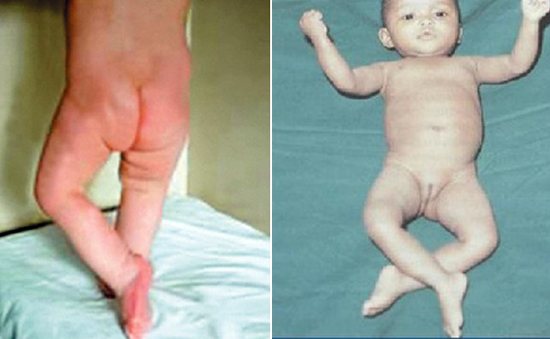
Rice. 4. Poliomyelitis in children. Flaccid paresis of the left limb (photo on the left). Paralysis of the lower extremities and muscle atrophy (photo on the right).
Vaccination calendar
The population immunization schedule for the prevention of polio was established by the Order of the Ministry of Health of the Russian Federation of 2011. There are two types of vaccines used for vaccinations:
- IPV is an inactivated polio vaccine that is given by injection;
- OPV is an oral polio vaccine made from live strains of the virus.
The preparations contain 3 types of polio virus, the introduction of which becomes a reliable protection for a person against any form of the disease. There are also complex vaccines, such as Pentaxim, Infanrix Penta, which include several viruses at once.
The first vaccination against polio occurs at 3 months from birth. It is important to do it in a timely manner, since by this time the baby no longer has maternal immunity.
Table. Procedure for vaccinating children against polio.
| Vaccination stage | Age | Vaccine | Form |
| Vaccination occurs three times with an interval of 45 days: | |||
| 1st | 3 months | IPV | Injection |
| 2nd | 4.5 months | IPV | Injection |
| 3rd | 6 months | OPV | Oral drops |
| Revaccination occurs in three stages according to the following scheme: | |||
| 1st | 18 months | OPV | Oral drops |
| 2nd | 20 months | OPV | Oral drops |
| 3rd | 14 years | OPV | Oral drops |
It is believed that stable immunity is formed after a full range of vaccinations. Vaccination is provided free of charge at public clinics. The polio vaccine is given at the same time as DTP.
Vaccination can also be carried out in private clinics. To receive consultation and vaccination, you must make an appointment.
What polio vaccines are given to children and adults today?
To immunize the population in the Russian Federation, 2 types of vaccines are used:
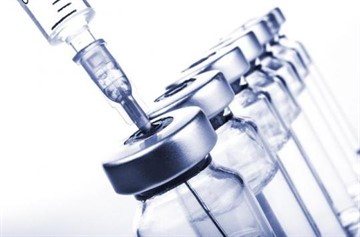
- OPV – oral polio live;
- IPV – inactivated (killed) polio.
Oral polio vaccine is a pink oral solution with a specific flavor. The drug is dripped in an amount of 3-4 drops onto the root of the tongue or tonsil. To do this, use a plastic dropper (sold complete with the drug), a pipette or a syringe without a needle.
The indication for the administration of an inactivated vaccine is the presence of contraindications to the use of OPV, as well as the likelihood of adverse reactions from the gastrointestinal tract. IPV is injected into the thigh area or under the shoulder blade (for children under one and a half years old), as well as into the shoulder (for older children).
Many doctors recommend administering the inactivated vaccine, because it has a number of advantages over OPV:
- does not interact with gastric juice (immediately after the injection you can drink and eat);
- is more effective (due to more accurate dosage);
- does not affect the intestinal microflora;
- is more convenient to store and use;
- does not reduce the body’s local immune defense;
- does not contain sodium merthiolate, which is hazardous to health.
Also, preparations for vaccination are usually divided into monovalent and complex. The former form immunity to one pathogen, and the latter – to several.
The following monovalent IPV are the most popular in the Russian Federation:
- Poliorix . The drug is made in France. Contains a complete set (3 pcs.) of virus strains. It has a mild effect, so it can be used for vaccination of weakened and premature infants, as well as children with insufficient body weight. When it enters the body, it triggers the production of antibodies to the polio virus, forming stable lifelong immunity. Can be used in parallel with other vaccines;
- Imovax polio . Product made in Belgium. It is a complete analogue of Poliorix (including in composition and effect on the body).
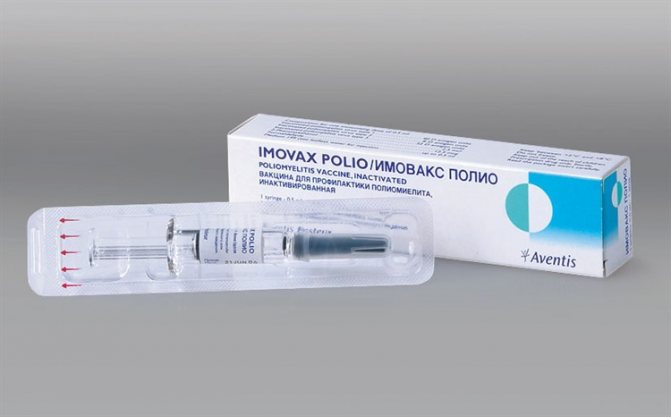
Imovax polio vaccine
Mono-vaccines are rarely used, since immunoprophylaxis with polyvalent drugs is considered more convenient and safe. The only case in which the introduction of a monovaccine is justified is if the child has contraindications to combined drugs.
The following complex IPV can be used to prevent polio:
- Infanrix IPV;
- Tetrakok;
- Pentaxim;
- Infanrix Hexa.
The drugs listed above protect the child from several diseases at once: polio, diphtheria, whooping cough and tetanus. Infanrix Hexa is considered the most effective, which forms immunity not only to the above diseases, but also to hepatitis B.
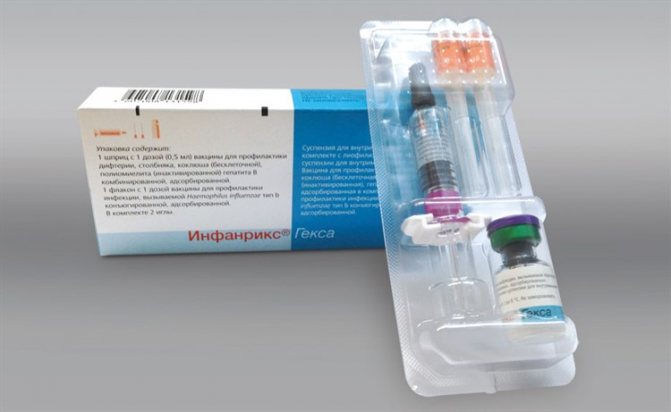
Vaccine Infanrix Hexa
The pediatrician should choose the drug for vaccination. In this case, it is necessary to take into account the general health of the vaccinated person, the individual characteristics of his body, medical history and other factors.
Complex vaccines are not included in the list of drugs provided free of charge by the state. You can buy them at a pharmacy or medical facility with a doctor's prescription.
Vaccinations for adults
If we are talking about immunization of adults, it is carried out according to the following schedule:
- 1st IPV vaccine;
- after 1-2 months, repeated introduction of IPV;
- after 6-12 months the 3rd vaccination is carried out.
Adults need to be vaccinated only in exceptional cases:
- if the person was not vaccinated in childhood;
- when planning a trip to countries where polio outbreaks have been reported;
- when working with infected people;
- after contact with a sick person.
The danger of contact with unvaccinated children after immunization
Speaking about whether the vaccine is contagious, it is worth noting that there is a risk of infection of a baby who has not previously been immunized when interacting with a vaccinated child. Therefore, it is recommended to exclude contact with unvaccinated children for at least a month.

Statistics show that the likelihood of infection is minimal, but it does exist .
As a rule, children attending preschool and educational institutions are vaccinated through the introduction of IPV. In this way, it is possible to reduce the risk of infection in children who do not have antibodies to the pathogen.
If the procedure was carried out using OPV, contact with unimmunized children should be limited. An unvaccinated child must endure a two-month quarantine.
Are there any restrictions
In some cases, vaccination cannot be done. Contraindications to immunization against polio:
- pregnancy;
- immunodeficiencies of various origins;
- allergy to the components of the drug (neomycin, streptomycin);
- severe reaction to a previous vaccination;
- colds, acute respiratory infections;
- exacerbation of chronic diseases.
In the last two cases, vaccination should be postponed until complete recovery. In a state of reduced immunity, vaccination can cause negative consequences.
Children with immunodeficiency cannot receive a vaccine based on live strains of the virus (OPV). In this case, the possibility of vaccinating them with an inactivated vaccine (IPV) is being discussed.
Advantages and disadvantages of OPV
The live polio vaccine has several advantages:
- promotes the production of antibodies in the intestines;
- lasting effect;
- stimulates the synthesis of interferon (a natural antivirus that protects against the development of influenza and acute respiratory diseases);
- there is no need for an injection.
The disadvantages of the drug are the following:
- risk of developing VAP (vaccine-associated polio);
- possible adverse reactions;
- a live virus is introduced (the child suffers a real disease in a mild form);
- After a certain period of time, the baby can infect other children with the disease.
How is vaccination carried out?
Inactivated vaccine (IPV) is given in two ways - subcutaneously or in the upper arm (thigh). The method of administration depends on the manufacturer of the drug.
Live vaccines (OPV) are administered orally to the lymphoid tissue of the pharynx or palatine tonsils. The child is asked to throw back his head and open his mouth, where 2 and 4 drops are dripped, depending on the dosage of the drug. For an hour after the vaccine is administered, you should not eat or drink, including water.
For 24 hours after vaccination, you should not eat allergenic foods, get hypothermic, or communicate with sick people.
Differences from non-live vaccine
Polio immunization is carried out using two types of drugs: IPV (inactivated), OPV (live). Their main difference is their composition. IPV contains dead viruses, and OPV is live, maximally weakened.
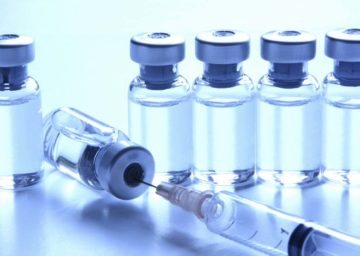
The method of administering the drug also differs. Inactivated - by injection, live - orally.
It has been noted that IPV vaccination is more easily tolerated by children, but does not provide a lasting effect. This is due to the fact that the causative agent of the disease can enter the child’s body along with food.
Only heat treatment can lead to its death. Washing food with water is not enough. OPV is capable of creating protective microflora in the intestines.
What to do if deadlines are missed
If the vaccination schedule is disrupted, there is no need to do the entire series again. If the first vaccination is not administered on time or doses are missed, the entire schedule is shifted according to a certain algorithm.
The doctor will determine which vaccinations were missed and prescribe their administration, observing the minimum intervals between them:
- between 1st and 2nd – 30 days;
- between 2nd and 3rd – 30 days;
- between the 3rd and 4th and beyond – 6 months.
Thus, if the first vaccination was missed at 3 months, it will be given at 4 months. It is too early to do the second one within the prescribed period (4.5 months), you need to maintain a gap of 1 month. Thus, the second vaccination is given at 5 months.
A dose administered before the minimum interval has expired is not counted. Thus, the entire series of immunizations must be completed before age 14. After this age, vaccination is carried out only according to epidemiological indicators.
If vaccination information is lost, the child is considered unvaccinated and a full series of polio vaccinations is required.
How is the procedure tolerated?
Children often tolerate immunization easily. The risk of complications and side effects is minimal. The consequences of vaccination appear extremely rarely, but are not completely excluded.
Side effects
The body's immune response after administration of the drug is weakly expressed.
Sometimes the following negative changes are observed:

- headache;
- slight rise in temperature;
- gagging;
- nausea;
- diarrhea;
- sleep disorders (excessive drowsiness, insomnia);
- weakness;
- muscle and joint pain;
- weakness;
- irritability;
- tearfulness;
- apathy.
Such symptoms do not pose any threat. It disappears on its own after a short time. There is no reason to worry.
Complications and consequences
Immunization complications are rare.
Their occurrence is due to the following reasons:
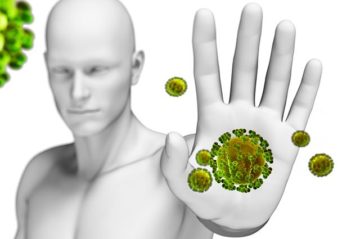
- weakened immune system;
- incorrect procedure;
- polio infection occurred before vaccination.
A dangerous consequence of immunization is VAP. You can reduce the risk of its development. To do this, you should undergo a full medical examination before the procedure to exclude any contraindications.
It is extremely important that the baby is absolutely healthy . If you have recently had a disease that suppresses your immune system, vaccination is postponed until your condition returns to normal.
These effects of vaccination are called vaccine-associated polio (VAP).
If vaccination is carried out in the presence of contraindications, there is a risk of vaccine-associated poliomyelitis.
There are several forms of this complication:
- Abortive. The course is mild. Recovery occurs after a month.
- Paralytic. The severity is average. Paralysis may occur.
- Disability. Severe VAP, leading to muscle tissue atrophy and disability. There is a risk of death.
Among the clinical manifestations of VAP are:

- hyperthermia;
- symptoms of acute respiratory disease (cough, sore throat, runny nose);
- muscle weakness;
- disruption of the digestive process;
- general deterioration of condition;
- headache;
- sleep becomes restless;
- convulsive syndrome;
- mild paralysis.
If such symptoms appear, it is extremely important to immediately seek help from a pediatrician. Need emergency hospitalization .
After an examination has been carried out, complaints have been studied, a comprehensive examination has been carried out, and the optimal treatment tactics can be selected. It is prescribed individually. The baby’s condition, clinical picture, form of VAP, and a number of other important factors are taken into account.
Possible adverse reactions from vaccination
Often, vaccination is well tolerated without causing any side effects to the body. Some side effects may sometimes occur:
- Mild intestinal upset that lasts about 2-3 days. If you have loose stools for a longer period of time and accompanying suspicious symptoms (poor appetite, lethargy), you should consult a doctor. This condition can be caused by an intestinal infection not associated with the administration of the vaccine.
- An allergic reaction in the form of a rash or hives. Any such phenomenon requires medical consultation to exclude serious consequences, for example, Quincke's edema. The doctor will prescribe antiallergic medications (Zodak, Fenistil, Loratadine). If you are prone to allergies, you should start taking antihistamines a few days before the vaccination.
- VAPP (vaccine-associated polio) occurs in one in a million cases. Most often, an abortive form is observed (without paralysis), accompanied by symptoms of acute respiratory infections, muscle twitching, pain in the back and limbs. Recovery occurs within a month. Severe paralytic forms are extremely rare.
To avoid complications, it is necessary to follow the rules of preparation and behavior after vaccination. However, side effects are often observed due to poor-quality material or non-compliance with the technique of its administration.
SIDE EFFECTS
General disorders and reactions
- Anxiety;
- Irritability;
- Low-grade fever;
- Hyperemia and pain at the injection site, infiltration at the injection site;
- Malaise;
- Cry;
- Drowsiness;
- Decreased appetite;
- Rash on the skin;
- Cough.
The safety profile of the POLIMILEX vaccine in clinical trials varied among patients of different ages. The above reactions, with the exception of pain at the injection site, were typical only for infants aged 3 to 6 months.
The recorded reactions to the administration of the POLIMILEX vaccine were mild, short-lived and disappeared within 1-3 days.
In addition, due to the simultaneous administration of other vaccines with the POLIMILEX vaccine, a precise cause-and-effect relationship between the occurrence of adverse events and the use of the vaccine cannot be established.
Post-registration surveillance data. Below are the data for commercial use of the drug outside the Russian Federation.
Local and systemic reactions
- Swelling
- Redness;
- Pain at the injection site;
- Fever;
- Polyneuropathy;
- Apnea in premature infants born at ≤28 weeks of gestation.
The identified reactions to the vaccine were mild, short-lived and disappeared within 1-3 days.
Preventive measures
To prevent various types of post-vaccination complications, as well as vaccine-associated poliomyelitis, it is necessary to adhere to the established schedule for administering two types of vaccines. Children under 12 months of age who are at high risk of developing diseases are vaccinated intramuscularly or intravenously. In the absence of contraindications, further revaccination will be carried out in drops.
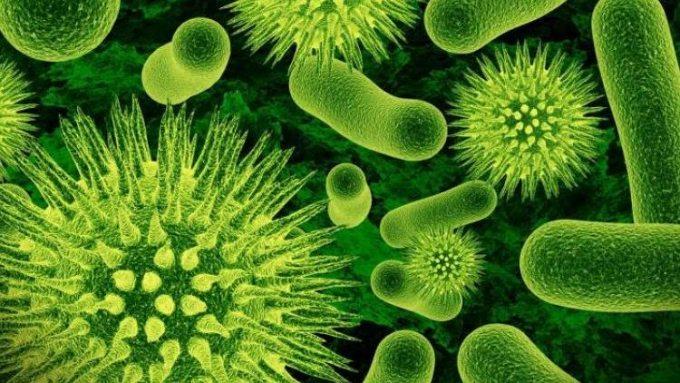
Antibodies that appear as a result of injection of an inactivated drug create strong protection against the disease the next time drops are administered. The exception is babies with congenital immunodeficiency, where the risk of developing the disease remains even with a mixed immunization regimen. For such children, the drug is administered only intravenously or into a muscle.
In addition, prevention includes:
- observation by a doctor during post-vaccination;
- it is necessary to avoid stress and emotional tension;
- you cannot engage in sports or physical activity;
- it is necessary to follow a dietary diet, avoiding fatty, salty, smoked foods, as well as allergenic foods;
- During seasonal ARVI and influenza, it is necessary to avoid places where many children gather and not to take them to kindergarten or school.
Small children and adults should observe hygiene measures, especially children or schoolchildren, since unwashed hands often cause infectious processes. If all conditions and precautions are followed, the chances of developing polio are reduced by 50%.
Today, the opinion of specialists, immunologists, virologists and pediatricians about the need for droplet vaccination against polio is extremely contradictory.
Some argue that the procedure potentially poses a danger to children, since it very often causes various complications. Many pediatricians recommend using only inactivated drugs, without the use of droplets. Other immunologists and pediatricians believe that only droplets can defeat the spread of the virus and, with regular use, reliably protect against mass infections.
State statistics indicate that in the period from 1998-2004, over a hundred cases of vaccine-associated polio were noted in the country, which most often occurred in patients who were not vaccinated. In this case, the infection occurred through contact from previously vaccinated patients. In some cases, this is the reason for refusing early vaccination.

It must be taken into account that almost all democratic countries have abandoned the use of droplets, switching to other inactivated analogues (active substances Pentaxim and Imovax Polio). Laboratory studies have proven that they are more effective than live vaccines and extremely rarely cause complications. The drug demonstrates results in the development of stable immune responses.
The live vaccine should be administered to children over one year of age unless they have contraindications. If the immunodeficiency is congenital or acquired, the use of the drug is prohibited. During the period after the administration of the drops, the child should be observed by a doctor. There is no need to allow psychological stress or the development of infection in the vaccinated person. During this time, it is recommended to follow a hypoallergenic diet.
Useful recommendations before vaccination
Before taking drops for infantile paralysis, it is important to comply with the following conditions:
- Children from 2 months of age are recommended to be vaccinated with droplets only a few weeks after using the inactivated vaccine. This is the only way to develop lasting immune responses;
- a woman, while expecting a baby, should not be vaccinated, due to possible pathological disorders in the development of the embryo;
- before the procedure, you must consult a pediatrician to determine possible contraindications;
- during the period of spread of viral infections, as well as other seasonal diseases of mass type, vaccination should be postponed until the epidemiological situation is optimized;
- in accordance with the approved vaccination calendar, mandatory vaccination is carried out for children before adolescence;
- in cases where drops are given to infants and they spit out the dose during instillation, it is necessary to repeat the procedure. If the child spits out or regurgitates droplets again, vaccination must be postponed for 60 days;
- after vaccination, it is forbidden to eat or drink for 60 minutes;
- the drug is extremely sensitive to temperature changes, so it has special marks with a thermometer, which indicates their suitability.
Even minor errors in the rules will not necessarily cause the development of VAPP. The risk of causing undesirable consequences in children is, of course, very high, but even an incomplete course of immunization will allow one to develop lasting protection against the virus.
Popular Infection and first symptoms of lymph node tuberculosis

